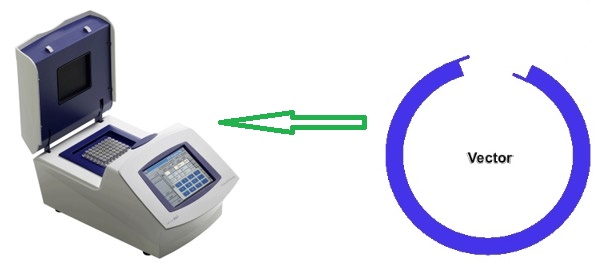Northern blotting technique is used to detect specific sequences of ribonucleic acid (RNA). The protocol for performing northern blotting technique is similar to that of southern blotting technique.
Northern blotting technique was first described by James Alwine and colleagues in 1977 as a molecular biology technique for identifying specific nucleotide sequence of a piece of RNA.
While southern blotting technique detect specific sequences of DNA, northern blotting technique exclusively detect specific sequences of RNA (particularly mRNA).
STEPS FOR NORTHERN BLOTTING
- The isolated RNA is digested with restriction endonuclease.
- Perform agarose gel electrophoresis (as earlier described) on the digested RNA.
- The RNA samples are separated according to their different sizes on agarose gel electrophoresis technique.
- Hybridize separated RNA in a neutralizing buffer by soaking the gel slab in an alkaline solution (e.g. NaOH).
- Transfer the gel slab (carrying the fractionated RNA fragments) onto a nitrocellulose membrane by blotting. Practically, the single-stranded RNA molecules are transferred by capillary action to a stack of nitrocellulose paper or membrane from the gel slab.
- Place a weight on the stack of nitrocellulose membrane in order to hold the blot in place. The nitrocellulose membrane is an absorbent paper; and thus the patterns of the RNA fragments are transferred onto the nitrocellulose paper via capillary action. RNA fragments are bound to the nitrocellulose paper in positions identical to those on the gel slab.
- Place the nitrocellulose membrane in a dish containing hybridization buffer with a radioactively labeled probe (specifically designed for the RNA sequence of interest).
- Wash the membrane with distilled water to remove unbound probe.
- Expose the nitrocellulose membrane to an X-ray film, and photograph it by autoradiography. Expression patterns of the RNA sequence of interest in the different samples are compared and analyzed.
References
Alberts B, Bray D, Lewis J, Raff M, Roberts K and Watson J.D (2002). The molecular Biology of the Cell. Fourth edition. New York, Garland, USA.
Chen I and Dubnau D (2004). DNA uptake during bacterial transformation. Nat. Rev. Microbiol. 2 (3): 241–249.
Cooper G.M and Hausman R.E (2004). The cell: A Molecular Approach. Third edition. ASM Press.
Dale J (2003). Molecular genetics of bacteria. Jeremy W. Dale and Simon Park (4th eds.). John Wiley & Sons Ltd, West Sussex, UK. Pp. 312-313.
Das H.K (2010). Textbook of Biotechnology. Fourth edition. Wiley edition. Wiley India Pvt, Ltd, New Delhi, India.
Lewis R (2004). Human Genetics: Concepts and Applications. Sixth edition. McGraw Hill Publishers, USA.
Lodish H, Berk A, Matsudaira P, Kaiser C.A, Kreiger M, Scott M.P, Zipursky S.L and Darnell J (2004). Molecular Cell Biology. Fifth edition. Scientific American Books, Freeman, New York, USA.
Madigan M.T., Martinko J.M., Dunlap P.V and Clark D.P (2009). Brock Biology of Microorganisms, 12th edition. Pearson Benjamin Cummings Inc, USA.
McPherson M and Moller S (2002). PCR: The Basics. 2nd edition. Taylor and Francis Group. New York, USA.
Sambrook, J., Russell, D.W. (2001). Molecular Cloning: a Laboratory Manual, 3rd edn. Cold Spring Harbor Laboratory Press, New York.
Synder L, Peters J.E, Henkin T.M and Champness W (2013). Molecular Genetics of Bacteria. Fourth edition. American Society of Microbiology Press, USA.
Tamarin Robert H (2002). Principles of Genetics. Seventh edition. Tata McGraw-Hill Publishing Co Ltd, Delhi.
Discover more from #1 Microbiology Resource Hub
Subscribe to get the latest posts to your email.



